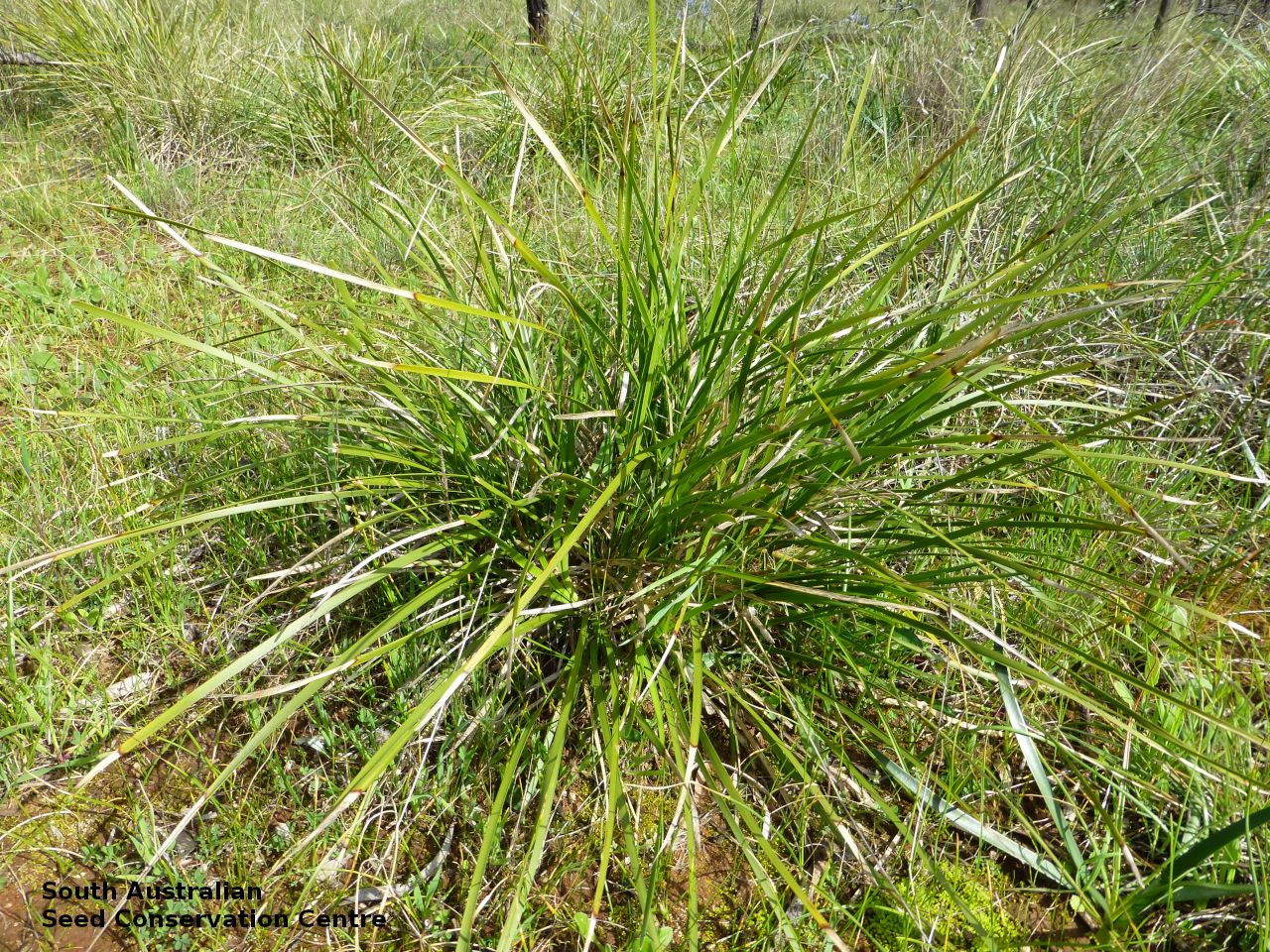
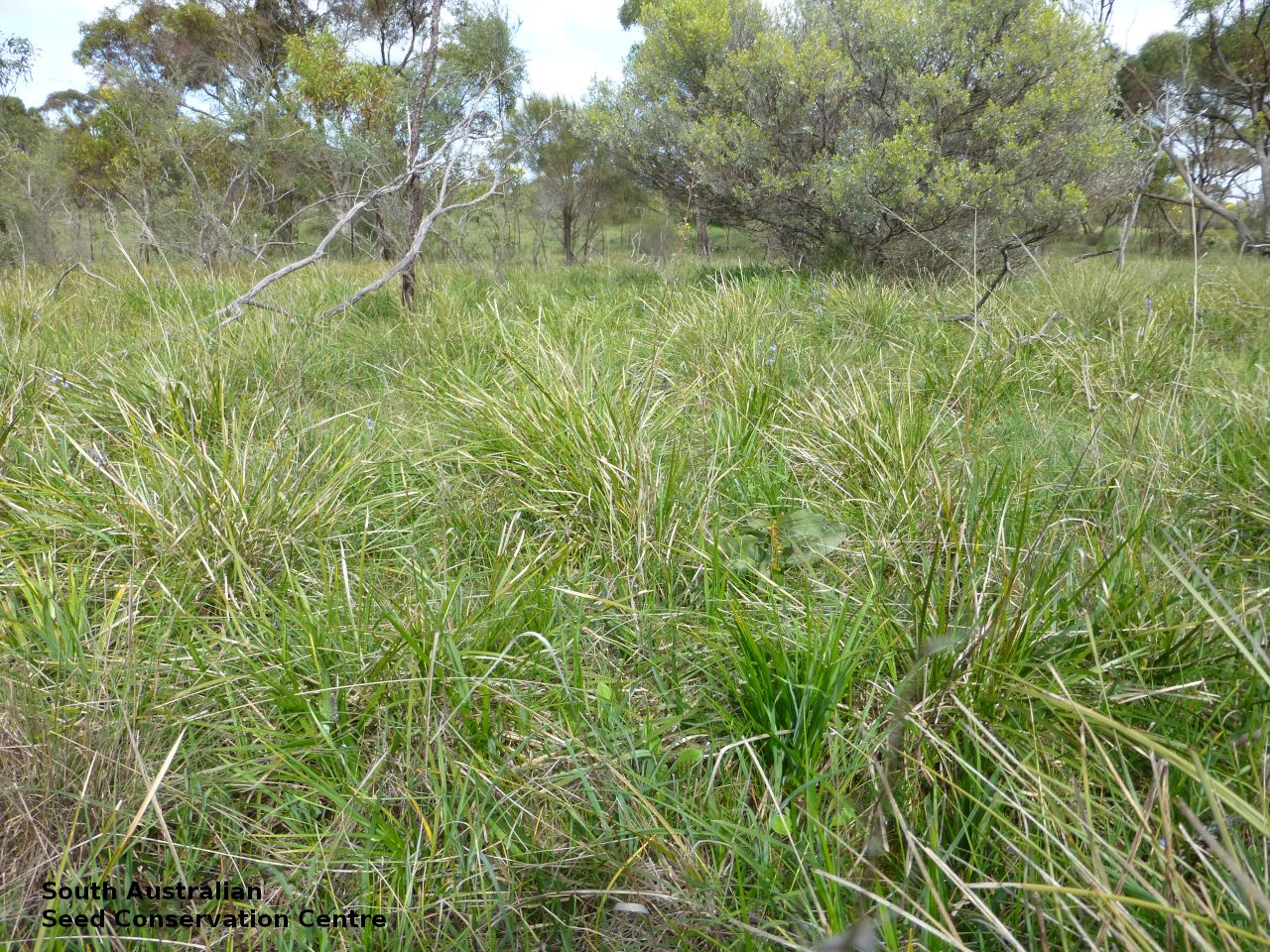
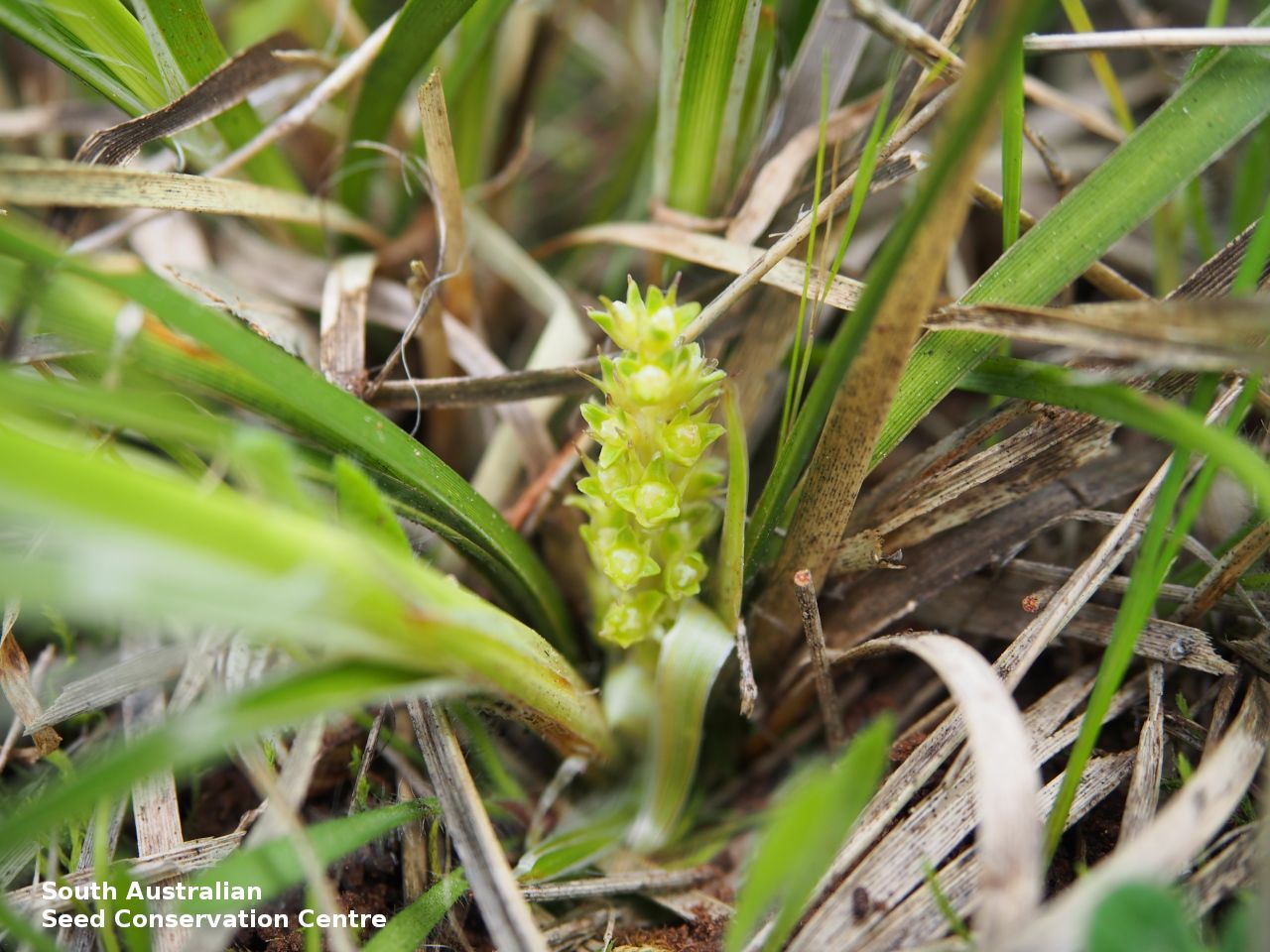
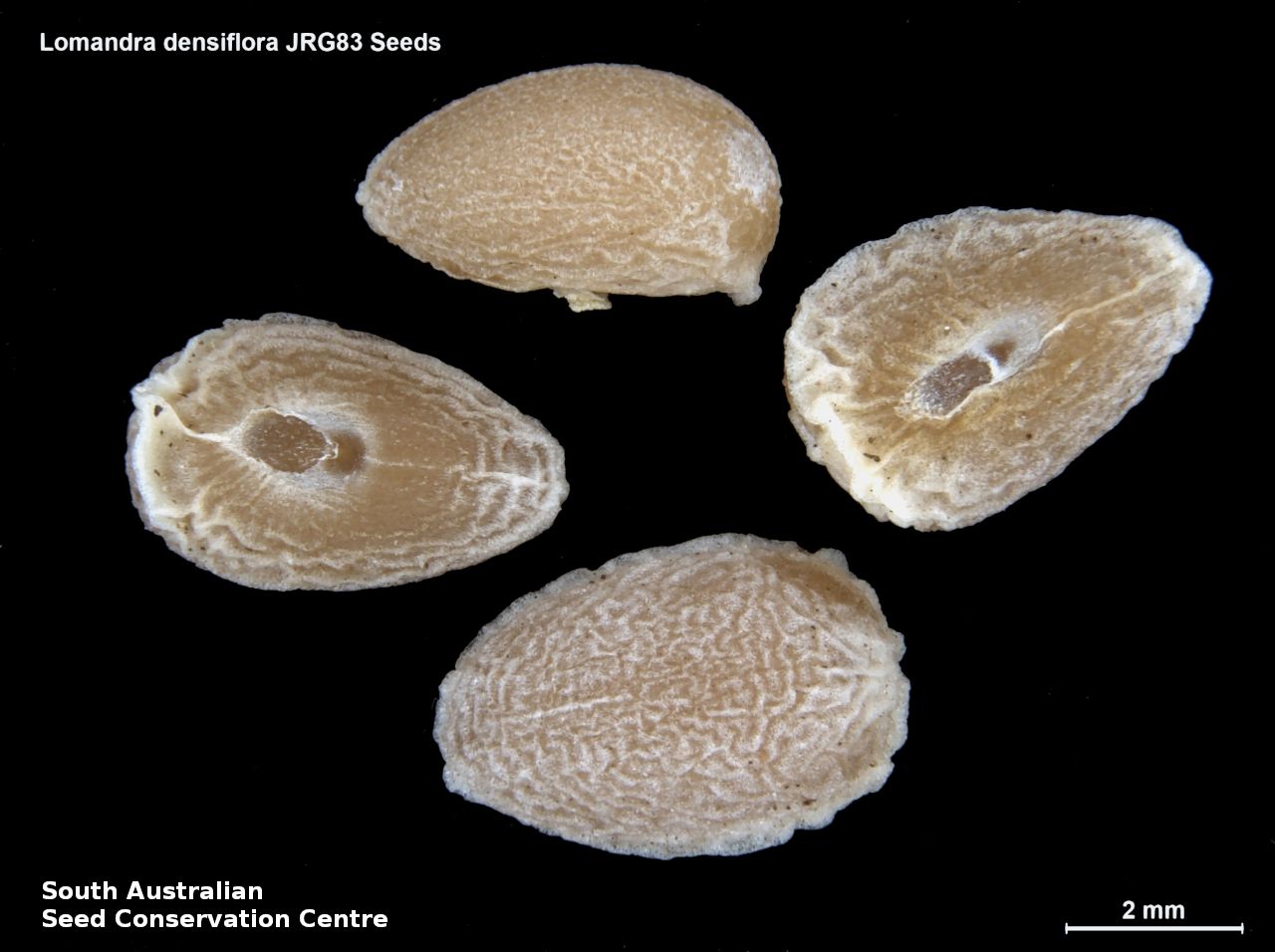

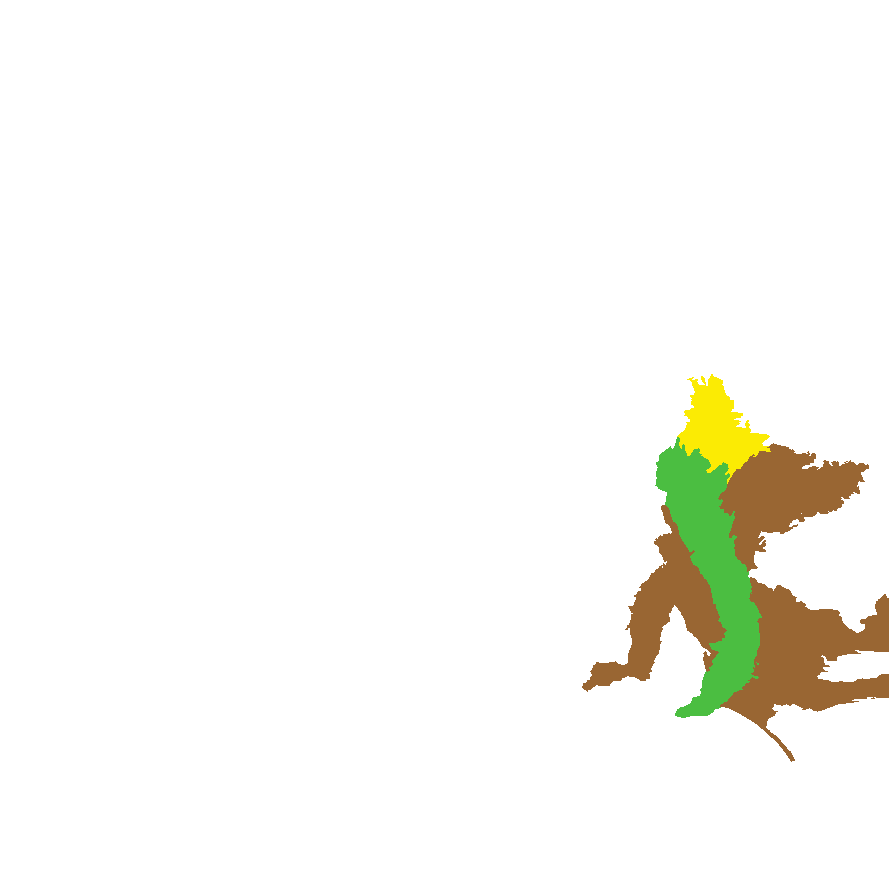
Botanical art
Common names
Pointed Mat-rush
Soft Tussock Mat-rush
Etymology
Lomandra, from the Greek 'loma', meaning edge, border or fringe and 'andros,' meaning a male, alluding to the circular margin of the anthers in some species. Densiflora from Latin for densely flowered.
Distribution and status
Endemic to South Australia and found in the Mount Lofty and Flinders Ranges, in open woodlands. Native. Common in South Australia.
Herbarium regions: Flinders Ranges, Eyre Peninsula, Northern Lofty, Murray, Yorke Peninsula, Southern Lofty, Green Adelaide
NRM regions: Adelaide and Mount Lofty Ranges, Eyre Peninsula, Northern and Yorke, South Australian Arid Lands, South Australian Murray-Darling Basin
AVH map: SA distribution map (external link)
Plant description
Dioecious perennial tussock herb with bright green rigid leaves with 3 tiny points at the tip, to 60 cm long; basal sheaths becoming fibrous. Flower white. Flowering between August and November. Fruits are ovoid to globular capsule to 6 mm long; smooth, truncate at the summit, sometimes slightly curved. Seeds are yellow-brown, rounded wedge-shaped seed to 6 mm long and 3 mm wide. Seed embryo type is linear, underdeveloped.
Seed collection and propagation
Collect seeds between November and December. Collect mature fruits, turning brown with a hard seed inside, or when they are starting to split. Place the capsules in a tray and leave to dry for one to two weeks. Then rub the capsules gently by hand to dislodge the seeds. Use a sieve to separate the unwanted material. Store the seeds with a desiccant such as dried silica beads or dry rice, in an air tight container in a cool and dry place. From two collections, the seed viability was high, at 100%. This species has morpho-physiological dormancy and will germinate slowly over weeks to months.
| Location | No. of seeds (weight grams) | Number of plants | Date collected | Collection number Collection location | Date stored | % Viability | Storage temperature |
|---|---|---|---|---|---|---|---|
| BGA MSB | 3,000 (38.1 g) 2,400 (30.45 g) | 50+ | 21-Nov-2006 | DJD695 Southern Lofty | 1-Aug-2007 | 100% | -18°C |
| BGA | 7,200 (108.72 g) | 20-Nov-2013 | JRG83 Murray | 1-Nov-2017 | 100% | -18°C |
Number of plants: This is the number of plants from which the seeds were collected.
Collection location: The Herbarium of South Australia's region name.
% Viability: Percentage of filled healthy seeds determined by a cut test or x-ray.